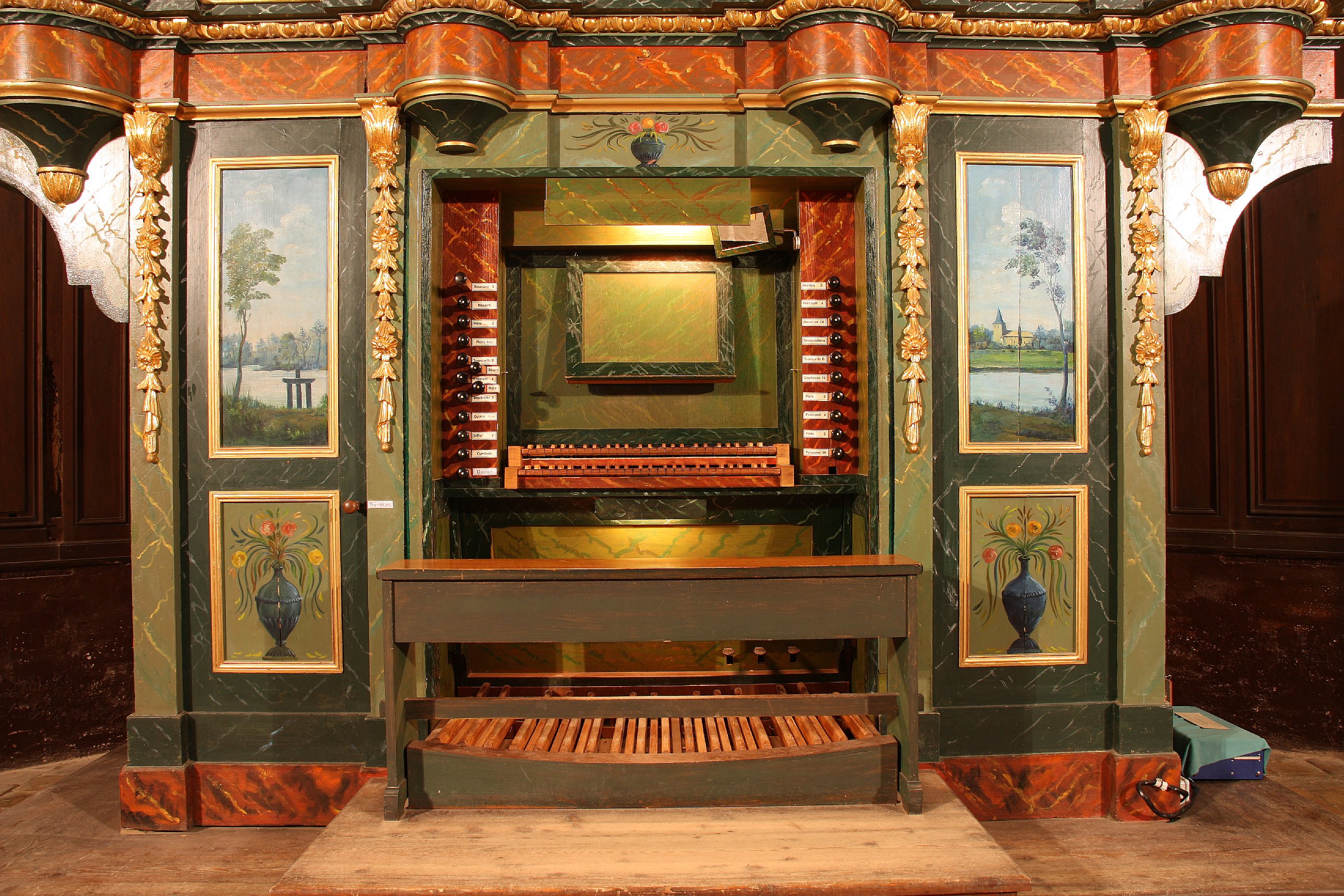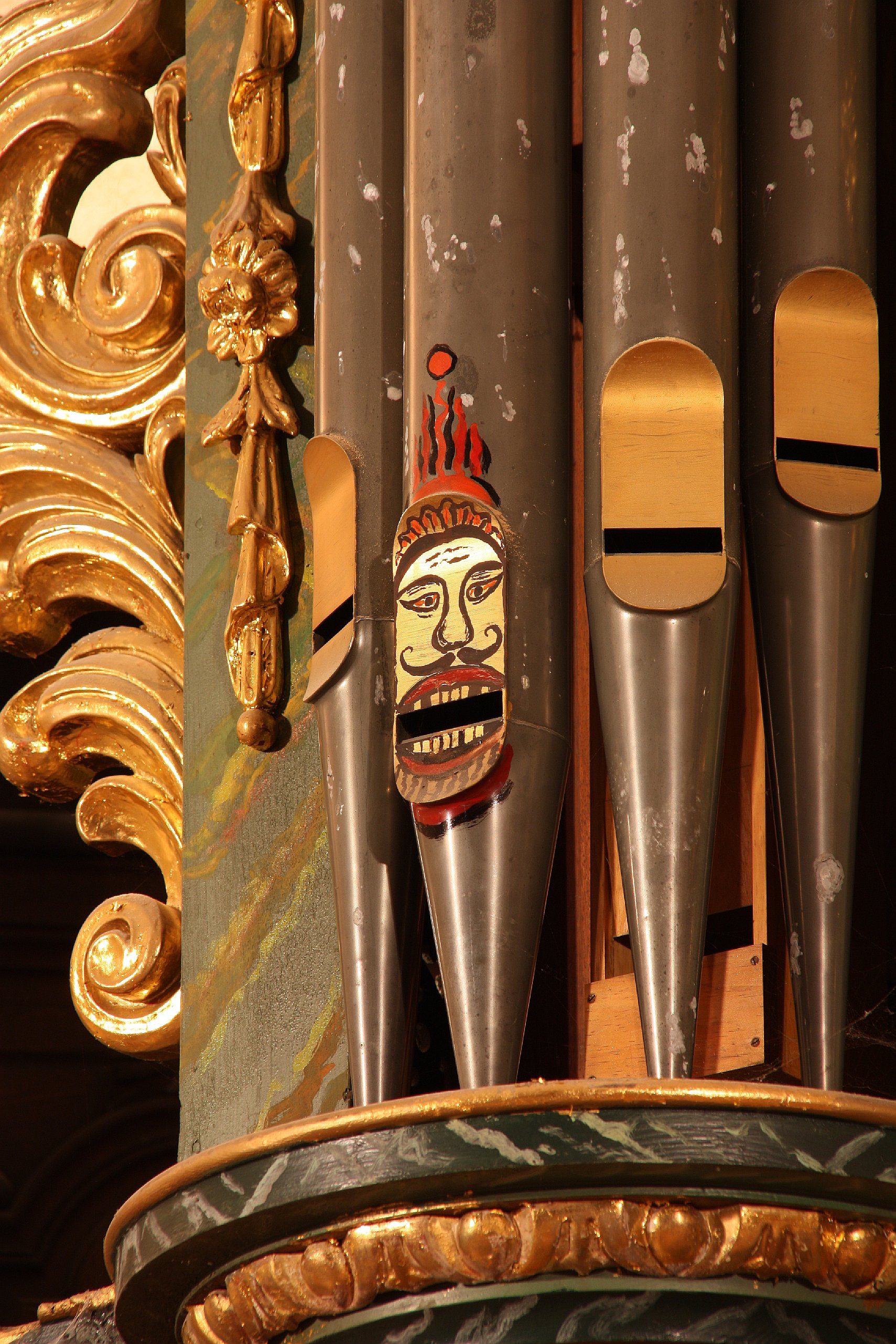Montpon-Ménestérol, Église Notre-Dame-de-l'Assomption de Ménestérol
| Builder | G. Grenzing |
|---|---|
| Year | ca. 1982 |
| Period/Style | Baroque |
| Stops | 23 |
| Keyboards | 2+P |
| Keyaction | tracker/mechanical |
| Tuning | Equal at 440 Hz |
| Sampleset |
Available
 , sampled by
Sonus Paradisi
, sampled by
Sonus Paradisi
|
The church of Saint Peter in Chains of Ménestérol was built in the XII century in Romanesque style. The western front with portal remains from this period. The interior was rebuilt in the fifteenth century. Two side chapels were added in the seventeenth century.
In the 1970’s, the organist Francis Chapelet was looking for a concert instrument for the church. He used the remains of the organ of the Temple St Mathieu de Colmar which had been stored in a dismantled state after a fire. These remains included the case of the organ, the windchest of the Grande Orgue, some mechanical elements and the front pipes. The 23-stop Colmar instrument, which had come close to destruction, had been built by ValentinRinckenbach in 1842 for the chapel of the old hospital which then became the Temple of St. Mathieu. After restoring, assembling and decorating the case in the choir of Saint Peter, a new instrument was added by Gerhard Grenzing between 1980 and 1982. This consisted of two manuals (Hauptwerk, Oberwerk) and Pedal, with 23 speaking stops in all. In 2006, J. F. Dupont carried out a major overhaul of the organ, adding a Dolzian 8' in place of the small Regal of the Récit.
The organ is built in the style of the North German Baroque, on the model of the smaller Schnitger-type instruments which may be found for example in Grasberg, Pellworm, Noordbroek or Uithuizen.
In the 1970’s, the organist Francis Chapelet was looking for a concert instrument for the church. He used the remains of the organ of the Temple St Mathieu de Colmar which had been stored in a dismantled state after a fire. These remains included the case of the organ, the windchest of the Grande Orgue, some mechanical elements and the front pipes. The 23-stop Colmar instrument, which had come close to destruction, had been built by ValentinRinckenbach in 1842 for the chapel of the old hospital which then became the Temple of St. Mathieu. After restoring, assembling and decorating the case in the choir of Saint Peter, a new instrument was added by Gerhard Grenzing between 1980 and 1982. This consisted of two manuals (Hauptwerk, Oberwerk) and Pedal, with 23 speaking stops in all. In 2006, J. F. Dupont carried out a major overhaul of the organ, adding a Dolzian 8' in place of the small Regal of the Récit.
The organ is built in the style of the North German Baroque, on the model of the smaller Schnitger-type instruments which may be found for example in Grasberg, Pellworm, Noordbroek or Uithuizen.
| Hauptwerk (G.O.) | Oberwerk (Recit) | Pedal |
|---|---|---|
| Bourdon 16' | Bourdon 8' | Soubasse 16' |
| Montre 8' | Prestant 4' | Flute 8' |
| Bourdon 8' | Flute 4' | Prinzipal 4' |
| Prestant 4' | Doublette 2' | Flute 2' |
| Sesquialtera 2x | Quinte 1 3/5' | Posaune 16' |
| Nasard 2 2/3' | Sifflet 1' | |
| Flute 2' | Cymbale | |
| Plein-Jeu | Dulzian 8' | |
| Trompette Bass | ||
| Trompette Discant |
1650441461-J. S. Bach BWV 555 PRaeludium et Fuga in e
0:00
0:00
MenesterolSur anoniem - es ist das heil uns kommen her main
0:00
0:00
Scheidemann-Ballettind
0:00
0:00
1334163954-Hasse - Jesu Christus
0:00
0:00
https://www.sonusparadisi.cz/en/organs/france/menesterol-organ-model.html
 Pipe Organ Map
Pipe Organ Map


